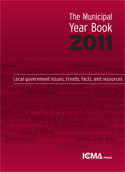
Through its economic development surveys, ICMA has been tracking the use of economic development strategies among local municipalities every five years since 1994. The timing of the 2009 economic development survey allows us to see the affects of the economic crisis when we compare the survey results to the 2004 survey results.
What are the Barriers to Economic Development?
Cost and availability of land continue to be identified [in ICMA’s local government survey] as the top barriers facing economic development. However, with the ongoing economic crisis, the 2009 survey finds that lack of capital has replaced the lack of building availability as the third most common barrier, reported by 50% of respondents compared to only 36% in 2004. The economic crisis has actually eased some of the other barriers: for example, the constraint on building availability, cited by 45% of respondents in 2004, dropped to 37% in 2009. Similarly, only 15% of respondents reported the high cost of housing as a barrier—down from 20% in 2004. As the foreclosure crisis deepens, however, affordable rental housing may become more of a concern for cities. Meanwhile, respondents who perceived the high cost of labor as an economic development barrier also decreased slightly from 11% in 2004 to 8% in 2009. Traffic congestion fell by about eight percentage points from 2004, but this could be a result of both the recession and the increased community development attention to transportation issues noted above.
Although quality of life was given high priority under community development investments, only 6% of local governments reported poor quality of life as a barrier to economic development. This may be because higher attention has been given to quality-of life issues over the last few years. Quality of life has many components, and one special focus in the 2009 survey was access to affordable, quality child care. Only 6% of responding governments saw inadequate child care supply as an economic development barrier, and yet studies around the country have shown that most communities lack an adequate supply. Indeed, in surveys of economic developers in New York and Wisconsin, this lack was cited as a barrier by the majority of respondents. This suggests that a broader array of participants may be needed in the economic development process to ensure that the full range of economic development concerns is addressed.
What Competition Are You Facing?
Interlocal competition has been a concern in economic development policy as local governments may bid against their neighbors to attract firms, which leads to a “race to the bottom.” Efforts to promote more regional collaboration to avoid destructive local competition were noted over the 1994–2004 decade. The 2009 survey reflects a slight increase in interlocal competition among close neighbors (nearby local governments and those within the same state), and a slight decrease in competition with governments in surrounding states, other states, and foreign countries. Given the ongoing economic crisis, the fact that proximate competition slightly increased while competition from distant sources became less important, shows that local governments are competing with other local governments to promote economic development.
Source: “Economic Development Strategies for Recessionary Times: Survey Results from 2009,” by Mildred E. Warner and Lingwen Zheng, Cornell University, is published in ICMA’s The Municipal Year Book 2011.
New, Reduced Membership Dues
A new, reduced dues rate is available for CAOs/ACAOs, along with additional discounts for those in smaller communities, has been implemented. Learn more and be sure to join or renew today!

